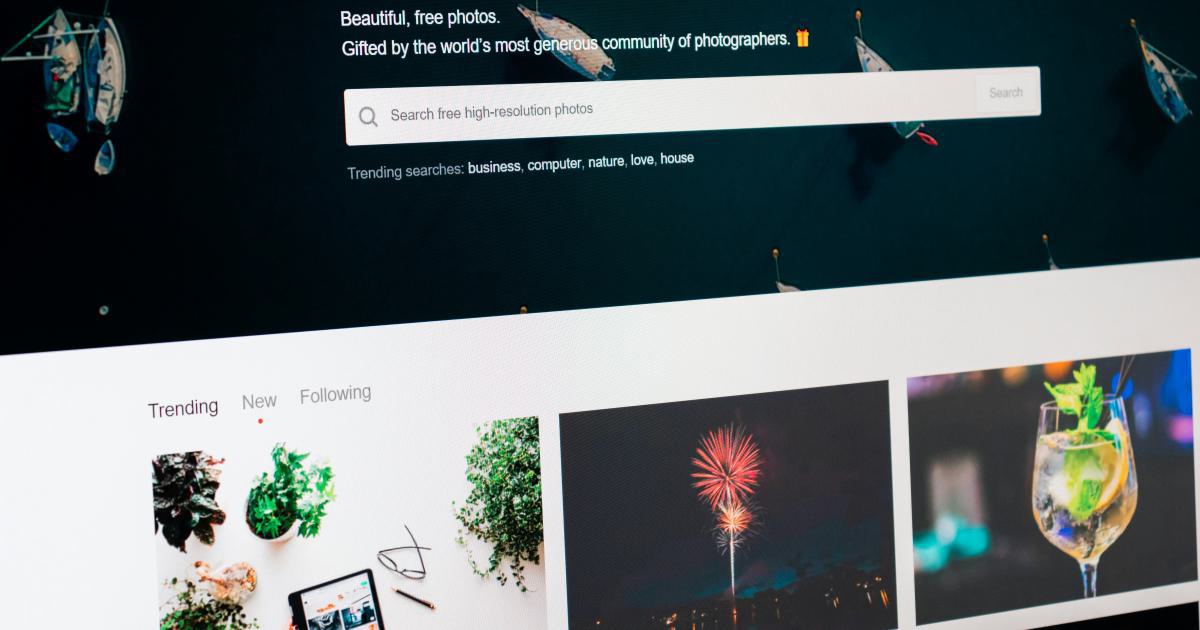10 Smart Content Repurposing Strategies That Drive Traffic


Introduction: Unlocking the Power of Content Repurposing
In the ever-evolving digital landscape, content has become the lifeblood of successful online strategies. However, creating high-quality, engaging content can be a time-consuming and resource-intensive endeavor. This is where content repurposing comes into play, offering a strategic approach to amplifying the reach and impact of your existing content.

Content repurposing is the art of transforming your original content into new formats, platforms, and experiences. By leveraging this approach, you can extend the longevity and effectiveness of your content, reaching a wider audience and driving increased traffic to your website or digital channels.
In this comprehensive article, we'll explore 10 smart content repurposing strategies that can help you maximize your content's potential and drive sustainable growth for your business.
1. Repurpose Blog Posts into Social Media Content
Your blog is a treasure trove of valuable content that can be repurposed for social media platforms. By breaking down your blog posts into bite-sized pieces, you can create a steady stream of engaging social media content that resonates with your audience.
Highlight Key Takeaways
Extract the most salient points, insights, or quotes from your blog posts and turn them into social media-friendly graphics or short-form videos. These visual snippets can be shared on platforms like Instagram, Twitter, or LinkedIn, piquing your followers' interest and driving them back to your original content.

Expand on Blog Topics
Take a deeper dive into specific topics covered in your blog posts and create additional social media content that explores these themes further. This could include infographics, listicles, or even short "behind the scenes" videos that provide more context and value to your audience.

Leverage User-Generated Content
Encourage your social media followers to share their own experiences, thoughts, or questions related to your blog content. By reposting or engaging with this user-generated content, you can further amplify the reach and visibility of your original blog posts.

2. Convert Blog Posts into Video Content
Video content has become an increasingly dominant force in the digital landscape, with platforms like YouTube, TikTok, and Instagram Reels leading the charge. By repurposing your blog posts into video format, you can tap into this growing audience and reach new potential customers.
Create Animated Explainer Videos
Take the key points or step-by-step instructions from your blog posts and transform them into engaging, visually-appealing animated explainer videos. These videos can be shared on your website, social media channels, and even video platforms like YouTube to reach a wider audience.

Produce Quick Tip Videos
Distill the most actionable insights from your blog posts into short, digestible video formats. These "quick tip" videos can be easily consumed by your audience on the go and can encourage them to explore the full blog content for more detailed information.

Live-Stream Blog Content
Consider hosting a live stream or webinar where you dive deeper into the topics covered in your blog posts. This allows you to engage with your audience in real-time, answer their questions, and provide additional value beyond the written content.

3. Repurpose Content into Podcasts
Podcasting has become an increasingly popular medium, offering a unique opportunity to reach listeners who may prefer audio content over written or visual formats. By repurposing your blog posts or other written content into podcast episodes, you can expand your audience and provide an alternative way for your audience to consume your insights.
Convert Blog Posts into Podcast Episodes
Adapt the structure and key points from your blog posts into a conversational, audio-friendly format. This could involve recording yourself reading the blog post or creating a more natural, scripted podcast episode that delves deeper into the topic.

Develop Complementary Podcast Content
Rather than simply repurposing existing blog content, consider creating new podcast episodes that complement or expand on the themes and topics covered in your written content. This can help you engage your audience in a more dynamic and multi-faceted way.

Invite Guests to Discuss Blog Topics
Bring in industry experts, thought leaders, or even your own customers to discuss the topics covered in your blog posts. This collaborative approach can add a new layer of depth and perspective to your content, making it more engaging and appealing to a wider audience.

4. Repurpose Content into Infographics
Infographics are a highly shareable and visually-engaging format that can help your content stand out in a crowded digital landscape. By transforming your written content into eye-catching infographics, you can effectively communicate complex information in a more digestible and memorable way.
Summarize Blog Post Key Points
Identify the most important data points, statistics, or key takeaways from your blog posts and create visually-appealing infographics that highlight this information. These infographics can be shared on your website, social media, or even used as lead magnets to capture new email subscribers.

Visualize Data and Trends
If your content includes data-driven insights or industry trends, consider repurposing this information into infographics that make the data more accessible and engaging for your audience. This can help you establish your brand as a thought leader in your industry.

Create Comparison Infographics
Highlight the differences or advantages of your products, services, or industry-related topics through comparative infographics. This can be an effective way to showcase your expertise and differentiate your offerings from the competition.

5. Repurpose Content into SlideShare Presentations
SlideShare, a popular platform for hosting and sharing presentation-style content, offers an excellent opportunity to repurpose your existing content. By transforming your blog posts, whitepapers, or other written materials into visually-engaging SlideShare presentations, you can reach a new audience and showcase your expertise in a more interactive format.
Convert Blog Posts into Slideshows
Take the key points, insights, and visuals from your blog posts and organize them into a coherent and visually-appealing SlideShare presentation. This allows you to present your content in a more visual and easy-to-digest format.

Develop Thought Leadership Presentations
Leverage your expertise and industry knowledge to create standalone SlideShare presentations that delve into relevant topics, trends, or best practices. These presentations can be shared on the SlideShare platform, embedded on your website, or repurposed for other marketing channels.

Optimize Presentations for SEO
Ensure your SlideShare presentations are optimized for search engines by including relevant keywords, descriptive titles, and informative descriptions. This can help drive organic traffic to your content and showcase your expertise to a wider audience.

6. Repurpose Content into Email Newsletters
Your email subscriber list represents a captive audience that has expressed interest in your brand or industry. By repurposing your content into engaging email newsletters, you can nurture these relationships and keep your subscribers informed and engaged.
Curate Blog Post Highlights
Select the most relevant and valuable blog posts from your content library and compile them into a concise, visually-appealing email newsletter. This allows you to showcase your best content and drive traffic back to your website.

Offer Exclusive Content
Create original, email-exclusive content that expands on or complements the topics covered in your blog posts or other written materials. This can include special reports, industry insights, or behind-the-scenes glimpses that add value for your subscribers.

Promote Repurposed Content
Use your email newsletters to promote the repurposed content you've created, such as videos, infographics, or SlideShare presentations. This helps to further amplify the reach and impact of your repurposed content.

7. Repurpose Content into Webinars or Virtual Events
Webinars and virtual events have become increasingly popular in recent years, offering an engaging way to connect with your audience and deliver valuable content. By repurposing your existing content into webinar or event-based formats, you can reach new potential customers and deepen your relationships with existing ones.
Adapt Blog Posts into Webinar Topics
Review your blog post library and identify topics that lend themselves well to a more interactive, presentation-style format. These can be transformed into engaging webinar sessions that provide a deeper dive into the subject matter.

Create Event-Specific Content
In addition to repurposing existing blog content, consider developing new, event-specific content that complements or expands on the themes and topics covered in your webinars or virtual events. This can help create a more comprehensive and valuable experience for your attendees.

Leverage Recorded Webinars
Record your live webinar sessions and repurpose them into on-demand content that can be shared on your website, social media, or even used as lead magnets to capture new email subscribers.

8. Repurpose Content into Lead Magnets
Lead magnets are valuable, gated content that you offer in exchange for a user's contact information, such as an email address. By repurposing your existing content into lead magnets, you can effectively capture new leads and nurture them through your sales funnel.
Transform Blog Posts into eBooks or Whitepapers
Expand on the key points and insights from your blog posts to create more comprehensive, in-depth content such as eBooks or whitepapers. These lead magnets can be offered as downloads on your website or promoted through other marketing channels.

Develop Checklists or Worksheets
Extract actionable steps or frameworks from your blog posts and transform them into downloadable checklists, templates, or worksheets. These practical resources can be highly valuable for your target audience and help you capture new leads.

Compile Content into Resource Libraries
Curate and organize your repurposed content, such as eBooks, infographics, and videos, into a comprehensive resource library that visitors can access in exchange for their contact information. This allows you to showcase the breadth of your expertise and provide value to potential customers.

9. Repurpose Content for Search Engine Optimization (SEO)
Optimizing your repurposed content for search engines can help you attract new audiences and drive more traffic to your website. By leveraging SEO best practices, you can ensure your repurposed content is discoverable and resonates with your target audience.
Optimize Blog Posts for SEO
When repurposing your blog content, ensure that you optimize each post for relevant keywords, meta tags, and other on-page SEO elements. This can help your content rank higher in search engine results and reach a wider audience.

Leverage Keyword-Driven Content
Identify high-performing keywords and topics that your target audience is actively searching for, and create new content or repurpose existing content around these keywords. This can help you attract more relevant traffic and position your brand as an authority in your industry.

Repurpose Content for Featured Snippets
Analyze your content to identify opportunities to optimize for featured snippets, which are the concise, direct answers that appear at the top of search engine results pages. By structuring your repurposed content to provide clear, concise answers, you can increase your chances of appearing in these coveted positions.

10. Repurpose Content for Different Platforms and Audiences
One of the key benefits of content repurposing is the ability to reach new audiences by adapting your content for different platforms and formats. By considering the unique characteristics and preferences of each platform, you can ensure your repurposed content resonates with its intended audience.
Adjust Content for Social Media
When repurposing content for social media, focus on creating bite-sized, visually-engaging formats that cater to the short attention spans and scrolling behaviors of social media users. This may involve transforming blog posts into social media graphics, videos, or interactive content.

Tailor Content for Professional Platforms
For platforms like LinkedIn, which cater to a more professional audience, consider repurposing your content to showcase your industry expertise and thought leadership. This could include creating in-depth articles, SlideShare presentations, or long-form video content that provides substantial value to your connections.

Adapt Content for Different Devices
As users increasingly consume content on a variety of devices, from desktops to mobile phones, ensure that your repurposed content is optimized for seamless user experiences across different screen sizes and input methods. This may involve creating responsive designs, mobile-friendly videos, or easily shareable formats.

Conclusion: Maximizing the Impact of Your Content
Content repurposing is a powerful and strategic approach that can help you amplify the reach and impact of your existing content. By implementing these 10 smart content repurposing strategies, you can breathe new life into your content, reach wider audiences, and drive sustained traffic to your website or digital channels.
Remember, the key to successful content repurposing lies in understanding your audience, their preferences, and the unique characteristics of each platform or format. By tailoring your repurposed content to meet the needs and expectations of your target customers, you can effectively position your brand as a thought leader and trusted resource in your industry.
Embrace the power of content repurposing and unlock the full potential of your content to achieve your business goals and drive long-term growth.